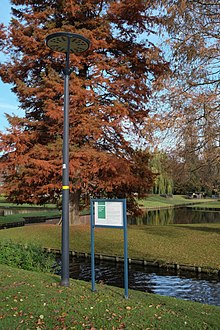Street art, guerrilla art, and graffiti

Graffiti is characteristically made up of written words that are meant to represent a group or community in a covert way and in plain sight. The telltale sign of street art is that it usually includes images, illustrations, or symbols that are meant to convey a message. While both works are meant to represent or tell a message to viewers, one difference between the two comes in the specific viewers that it is meant for. One trait of street art that has helped to bring it to positive light in the public eye is that the messages shown are usually made to be understandable to all.
While both of these types of art have many differences, there are more similarities than their origins. Both graffiti and street art are works of art that are created with the same intent. Most artists, whether they are working anonymously, creating an intentionally incomprehensible message, or fighting for some greater cause are working with the same ambitions for popularity, recognition, and the public display or outpouring of their personal thoughts, feelings, and/or passions.
The term street art is described in many different ways, one of which is the term "guerrilla art." Both terms describe these public works that are placed with meaning and intent. They can be done anonymously for works that are created to confront taboo issues that will result in a backlash, or under the name of a well-known artist. With any terminology, these works of art are created as a primary way to express the artist's thoughts on many topics and issues.
As with graffiti, a defining trait or feature of street art is that it is created on or in a public area without or against the permission of the owner. A main distinction between the two comes in the second trait of street art or guerrilla art, where it is made to represent and display a purposefully uncompliant act that is meant to challenge its surrounding environment. This challenge can be granular, focusing on issues within the community or broadly sweeping, addressing global issues on a public stage.
This is how the term "guerrilla art" was associated with this type of work and behavior. The word ties back to guerrilla warfare in history where attacks are made wildly, without control, and with no rules of engagement. This type of warfare was dramatically different than the previously formal and traditional fighting that went on in wars normally. When used in the context of street art, the term guerilla art is meant to give a nod to the artist's uncontrolled, unexpected, and often unnamed attack on societal structure or norms.
Guerilla sculptureedit
Guerilla sculpture is the placement of sculptures in street settings without official approval; it developed from street art in England in the late 20th century. In addition to the nontraditional setting of the works of art involved, there are also many different techniques used in the creation of this artwork. The artists tend to work illegally and in secrecy to create and place these works in the dark of night, cloaked in mystery regarding their origins and creators. The sculptures are used to express the artist's views and to reach an audience that would not otherwise be reached through more traditional methods of displaying one's work to the public. In performing these acts of artistic expression, they are not working to gain acceptance or love of the people that they reach, but at times may even anger those who view their work.
An example is the overnight appearance of an unsanctioned sculpture of Edward Snowden onto a column in Fort Greene Park in New York City. In other cases, the sculptures integrate two-dimensional backdrops with a three-dimensional component, such as one by Banksy titled Spy Booth (2014). The backdrop was painted on a wall in Cheltenham, England and featured Cold-War spy characters adorned in trench coats and fedoras, with spy accoutrements, microphones, and reel-to-reel tape decks. These characters appeared to be tapping into a broken telephone booth.
A deviation from the unsanctioned street sculpture is "institutionalized guerilla sculpture", which is sanctioned by civic authorities and can be commercialized. One such artist from the Netherlands is Florentijn Hofman, who in 2007 created Rubber Duck, a colossal rendition of the childhood tub-toy. The Guardians of Time guerrilla dOCUMENTA are social sculptures by Manfred Kielnhofer.
Comments
Post a Comment